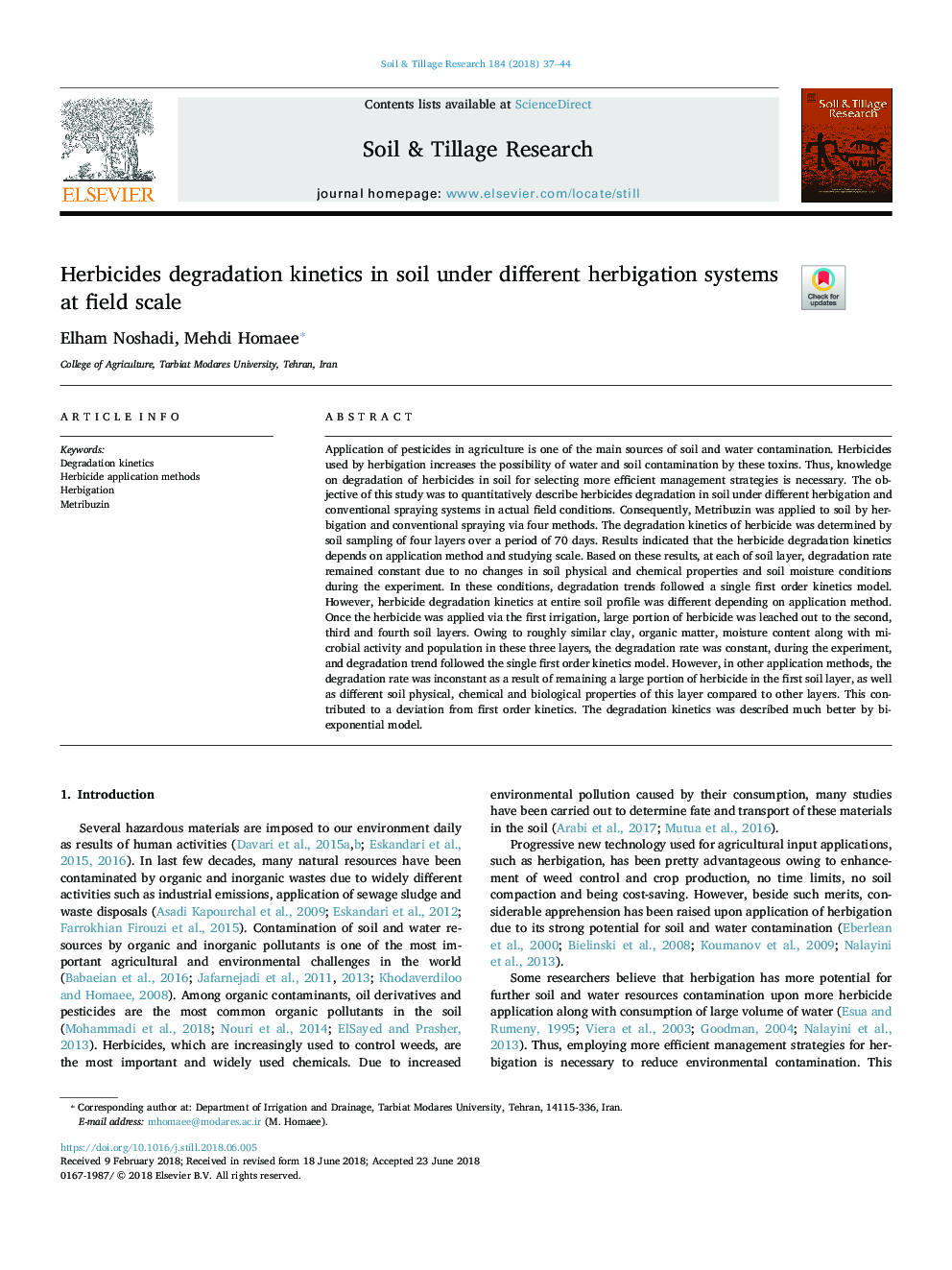| Article ID | Journal | Published Year | Pages | File Type |
|---|---|---|---|---|
| 6772878 | Soil and Tillage Research | 2018 | 8 Pages |
Abstract
Application of pesticides in agriculture is one of the main sources of soil and water contamination. Herbicides used by herbigation increases the possibility of water and soil contamination by these toxins. Thus, knowledge on degradation of herbicides in soil for selecting more efficient management strategies is necessary. The objective of this study was to quantitatively describe herbicides degradation in soil under different herbigation and conventional spraying systems in actual field conditions. Consequently, Metribuzin was applied to soil by herbigation and conventional spraying via four methods. The degradation kinetics of herbicide was determined by soil sampling of four layers over a period of 70 days. Results indicated that the herbicide degradation kinetics depends on application method and studying scale. Based on these results, at each of soil layer, degradation rate remained constant due to no changes in soil physical and chemical properties and soil moisture conditions during the experiment. In these conditions, degradation trends followed a single first order kinetics model. However, herbicide degradation kinetics at entire soil profile was different depending on application method. Once the herbicide was applied via the first irrigation, large portion of herbicide was leached out to the second, third and fourth soil layers. Owing to roughly similar clay, organic matter, moisture content along with microbial activity and population in these three layers, the degradation rate was constant, during the experiment, and degradation trend followed the single first order kinetics model. However, in other application methods, the degradation rate was inconstant as a result of remaining a large portion of herbicide in the first soil layer, as well as different soil physical, chemical and biological properties of this layer compared to other layers. This contributed to a deviation from first order kinetics. The degradation kinetics was described much better by bi-exponential model.
Keywords
Related Topics
Physical Sciences and Engineering
Energy
Renewable Energy, Sustainability and the Environment
Authors
Elham Noshadi, Mehdi Homaee,
